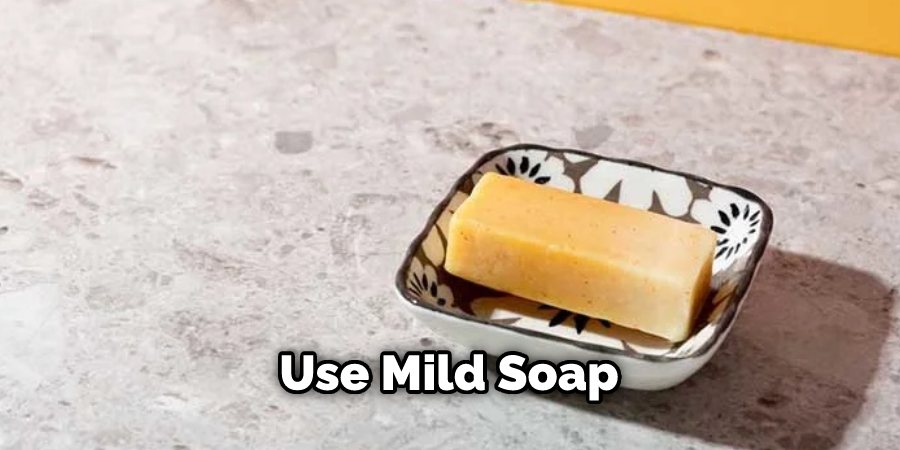When you purchase a hammock, knowing how and when to wash it is important. This will help maintain the quality of the hammock and extend its life so that you can enjoy it for many years to come. Washing your hammock regularly is also necessary if you want to keep it clean and free from dirt and debris. With the proper care and maintenance, you can ensure that your hammock will last for many years.

The advantages of washing a hammock are numerous. Keeping your hammock clean and free from dirt, dust, and mildew helps to maintain its comfort and longevity. Washing a hammock can also help prevent the buildup of mold, which can cause health risks. Additionally, cleaning your hammock periodically will keep it looking fresh so you can enjoy it for many years to come. Washing a hammock also removes any unpleasant odors from the fabric, ensuring that it remains fresh and inviting when taken out of storage. In this blog post, You will learn in detail how to wash a hammock.
Step-by-Step Processes for How to Wash a Hammock
Step 1: Inspect the Hammock
Before washing the hammock, inspecting it for any potential damages is important. Look for tears, frays, and other signs of wear. If there are any weak spots in the fabric, consider patching them before attempting to wash the hammock.
Step 2: Remove All Accessories
Before putting the hammock in the washing machine, all accessories, such as pillows, ties, straps, and carabiners, should be removed. This will help prevent them from getting damaged in the machine. Brush off any dirt or debris on the hammock before putting it into the washing machine. This helps to keep the fabric cleaner during the wash cycle.
Step 3: Put the Hammock in a Washing Machine
Place the hammock into the washing machine on a gentle cycle setting with mild detergent. Do not use bleach or fabric softener, as this may damage the fabric of the hammock. Depending on the fabric of the hammock, select an appropriate wash cycle. A cold or warm water cycle should be used if the fabric is durable and tough. For fragile fabrics, use only a cold water cycle.

Step 4: Use Cold Water
Always use cold water when washing a hammock to minimize shrinkage and fading of the fabric. To ensure the fabric is thoroughly cleaned, washing and rinsing the hammock twice is important. This will help remove any remaining dirt or debris from the fabric.
Step 5: Dry on Low Heat Setting
After washing, place the hammock in a clothes dryer set to low heat. This will help to prevent shrinkage and damage to the fabric. If possible, air-dry the hammock outdoors in a cool and shady area. Alternatively, hang it up on a clothesline or drying rack until completely dry.
Step 6: Store Hammock Properly
Once the hammock is dry, fold it up neatly and store it in a cool, dry place. This will help extend its lifespan and keep it looking new. Following these steps will ensure that your hammock stays clean and lasts for many years of enjoyment.
Tips for How to Wash a Hammock

- Check for any tears or weak spots in the hammock before washing. If you notice damage, repair it with a patch kit before washing.
- If you have a canvas hammock, soak it in cold water for about 30 minutes to loosen dirt and other particles before washing it off with soap and water.
- Protect the metal hardware from rusting by removing it from the hammock and washing it separately.
- Use mild soap or a specialized hammock cleaner to wash the fabric of the hammock. Avoid harsh chemicals that may damage the material.
- Avoid using a high-pressure washer, as it can damage the fabric. Instead, use a soft bristle brush to scrub the hammock.
- Rinse the hammock well after washing it with soap and water, ensuring no soapy residue is left behind.
- Hang or lay the hammock out in direct sunlight for several hours to dry completely before using it again.
- If the hammock is wet, do not attempt to fold it or hang it while wet, as this can cause mold and mildew buildup.
Always make sure it is completely dry before folding and storing away. Also, make sure to store the hammock in a cool, dry place when not in use.
How Often Should You Wash Your Hammock?
The frequency of washing your hammock depends on the type of material you choose. If you have a cotton or polyester hammock, it should be washed every few months or as needed. The best way to tell if your hammock needs a wash is by looking for dirt and grime build-up or discolorations that may indicate that the hammock needs to be refreshed. Synthetic materials like nylon or polyester may require more frequent washing because of their fast-drying capabilities, so monthly cleaning is recommended.

If you take your hammock to a beach or other sandy area, rinse it off thoroughly with a hose and let it dry before storing it. If left in the sand, your hammock can quickly become uncomfortable and even unusable. Overall, how often you should wash your hammock varies depending on the material and usage. Be sure to inspect your hammock regularly for dirt and grime build-up to ensure its cleanliness and comfort.
How Do You Prepare the Hammock for Washing?
Before you begin washing your hammock, preparing the area and the material is important. Make sure to identify any heavily soiled or stained areas and pre-treat them before beginning a full wash cycle. Then, follow the steps below to ensure your hammock is properly washed and dried.
- Place the hammock into a washing machine with cold water on a gentle cycle.
- Add a mild detergent and let the machine run for 10 minutes or so before stopping it from letting the hammock soak for an additional 15-20 minutes.
- Rinse the hammock with cold water two times, making sure all soap residue is gone before moving on to drying your hammock.
- Lay your hammock flat or hang it outdoors to air dry completely, avoiding direct sunlight to prevent fading.
- Once dried, inspect the hammock for any possible damage and repair it as necessary with a sewing machine or by hand stitching.
By following these simple steps, you can easily clean a hammock in your home and maintain it for years. After cleaning the material, store the hammock properly away from direct sunlight or moisture when not in use.
How Do You Safely Store Your Hammock After Washing?
Once you have cleaned your hammock, it is important to know how to store it properly for future use. Storing a wet or damp hammock can lead to mold, mildew, and damage due to shrinkage. Here are some tips on how to store your clean hammock:
- Hang the hammock up in a dry, well-ventilated area.
- Avoid storing the hammock in direct sunlight.
- Ensure that the hammock is completely dry before you store it. Use a fan or hair dryer to speed up drying time if necessary.
- Protect your hammock from extreme temperatures by storing it in an insulated area when not in use.
- If you need to fold the hammock, be sure to fold it evenly so that the material does not become stretched or pulled out of shape.
- Store in a clean, dry environment and away from pests like moths and mice.
By following these tips, you can ensure that your hammock remains in good condition and is ready for use when needed. Proper storage will also help extend your hammock’s life and keep it looking great for years to come.
How Can You Protect Your Hammock From Dirt and Wear in the Future?
Once you’ve washed your hammock, you can follow a few simple steps to help it stay clean and keep it in great condition for years to come. First, take care not to get your hammock wet or dirty when using it. If possible, try to hang the hammock away from rain and wind, allowing it to dry if it gets wet. Doing this will help avoid the build-up of dirt and grime, which can be harder to remove.

If you’d like more protection from dirt and water, consider purchasing a hammock cover. This can cover the entire hammock when unused, protecting it from the elements and keeping out dirt. Taking care not to drag your hammock across rough surfaces when you move can also help prevent damage and ensure you don’t snag or tear the fabric.
Finally, make sure to store your hammock in a cool, dry place away from direct sunlight when not in use. This will help it last longer, as prolonged exposure to the sun can damage and fade the fabric.
Conclusion
In conclusion, washing your hammock is essential to keeping it in good condition. Taking the time to clean and care for the fabric can extend its longevity and ensure you get plenty of years of use out of it. Follow the simple steps outlined above—rinse, scrub, dry—to keep your hammock looking like new. Always use mild cleaners on your hammock, and never harsh chemicals or bleaching agents. I hope this article has been beneficial for learning how to wash a hammock. Make Sure the precautionary measures are followed chronologically.


